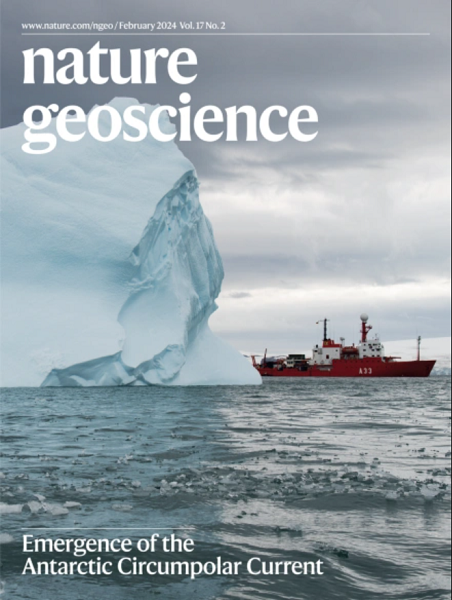在全球变暖的情况下,热浪持续时间的加速增加
IF 16.1
1区 地球科学
Q1 GEOSCIENCES, MULTIDISCIPLINARY
引用次数: 0
摘要
在全球变暖的情况下,预计热浪的频率和持续时间都会增加。热浪持续时间的概率分布是由温度的日常相关性形成的,因此不能简单地从每日极端温度概率的变化中推断出来。本文通过对全球历史和预估温度数据的统计分析表明,长时间热浪的变化随温度呈非线性增加。从欧洲中期天气预报中心(ECMWF)第5次再分析(ERA5)和耦合模式比对项目第6阶段(CMIP6)气候模式模拟的自相关波动理论分析来看,非线性导致升温速率加快;即区域时间平均增温的每一次增加都比前一次增加增加了长热浪的特征持续时间尺度。我们表明,该加速曲线可以通过局部温度变化的归一化近似地坍塌为跨区域的单一依赖。因此,对未来变化的预估可以与在其部分范围内对近期变化的观测进行比较,这支持了对近期加速的预估。我们还发现,在特定地区,时间最长、最不常见的热浪发生的可能性增加最大,从而产生非线性影响的复合来源。本文章由计算机程序翻译,如有差异,请以英文原文为准。


Accelerating increase in the duration of heatwaves under global warming
Heatwaves are expected to both increase in frequency and duration under global warming. The probability distributions of heatwave durations are shaped by day-to-day correlations in temperature and so cannot be simply inferred from changes in the probabilities of daily temperature extremes. Here we show from statistical analysis of global historical and projected temperature data that changes in long-duration heatwaves increase nonlinearly with temperature. Specifically, from analysis informed by theory for autocorrelated fluctuations applied to European Centre for Medium-Range Weather Forecasts (ECMWF) Reanalysis v5 (ERA5) reanalysis and Coupled Model Intercomparison Project Phase 6 (CMIP6) climate model simulations, we find that the nonlinearity results in acceleration of the rate increase with warming; that is, each increment of regional time-averaged warming increases the characteristic duration scale of long heatwaves more than the previous increment. We show that the curve for this acceleration can be approximately collapsed onto a single dependence across regions by normalizing by local temperature variability. Projections of future change can thus be compared to observations of recent change over part of their range, which supports the near-future-projected acceleration. We also find that the longest, most uncommon heatwaves for a given region have the greatest increase in likelihood, yielding a compounding source of nonlinear impacts. The duration of long heatwaves increases at an accelerating rate with warming such that a large increase in the risk of long-lasting heatwaves results from relatively modest warming, according to an analysis of historical and projected heatwaves.
求助全文
通过发布文献求助,成功后即可免费获取论文全文。
去求助
来源期刊

Nature Geoscience
地学-地球科学综合
CiteScore
26.70
自引率
1.60%
发文量
187
审稿时长
3.3 months
期刊介绍:
Nature Geoscience is a monthly interdisciplinary journal that gathers top-tier research spanning Earth Sciences and related fields.
The journal covers all geoscience disciplines, including fieldwork, modeling, and theoretical studies.
Topics include atmospheric science, biogeochemistry, climate science, geobiology, geochemistry, geoinformatics, remote sensing, geology, geomagnetism, paleomagnetism, geomorphology, geophysics, glaciology, hydrology, limnology, mineralogy, oceanography, paleontology, paleoclimatology, paleoceanography, petrology, planetary science, seismology, space physics, tectonics, and volcanology.
Nature Geoscience upholds its commitment to publishing significant, high-quality Earth Sciences research through fair, rapid, and rigorous peer review, overseen by a team of full-time professional editors.
 求助内容:
求助内容: 应助结果提醒方式:
应助结果提醒方式:


